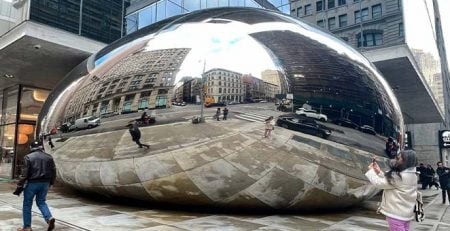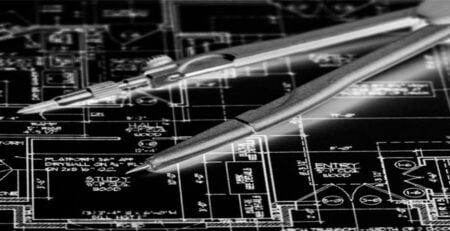How to use AI in Architecture
Hamoun Nik2024-03-09T23:12:13+00:00Artificial Intelligence (AI) has transformed various industries, and architecture is no exception. In recent years, the utilization of AI in architecture has gained significant momentum, reshaping the way architects design and construct buildings. This introduction delves into the multifaceted role of AI in architectural processes, focusing on “How to Use AI in Architecture.”
AI offers architects a powerful toolkit that enhances creativity, efficiency, and sustainability. One of the key aspects of AI’s application in architecture is its ability to generate innovative designs. Through generative design algorithms, architects can explore countless design possibilities, optimizing for factors such as aesthetics, functionality, and energy efficiency. AI’s predictive analytics can aid architects in making data-driven decisions, from site selection to material choices, ultimately leading to more sustainable and cost-effective projects.
Moreover, AI plays a pivotal role in automating tedious and time-consuming tasks. From design iterations to structural analysis, AI-driven software streamlines the architectural workflow, allowing architects to focus on the more creative aspects of their projects.
This essay will further explore the applications of AI in architecture, offering insights into how architects can harness the potential of AI to create visionary and sustainable structures that meet the demands of the modern world.
Table of Contents
ToggleIntroduction to the topic and the growing relevance of AI for architecture.
Artificial Intelligence (AI) has ushered in a transformative era for architecture. Architects, long regarded as the creators of awe-inspiring structures, are now collaborating with AI to unlock unparalleled creativity and efficiency in their designs. This essay delves into the expanding importance of AI in architecture and the ways in which it is harnessed for the benefit of architectural innovation.
AI has become an essential tool for architects due to its potential to generate innovative design solutions. The ability of AI to process vast datasets and simulate design scenarios has empowered architects to explore an array of design options efficiently. This is particularly significant when addressing complex architectural challenges and seeking design perfection. Architects can harness AI’s generative design capabilities to create structures that are not just visually appealing but also functional and sustainable.
Moreover, AI offers architects the advantage of predictive analytics. Through AI-driven tools, architects can predict and optimize aspects such as energy consumption, structural integrity, and even the environmental impact of a building. This predictive power enables architects to make informed decisions and ensures that designs are not only visionary but also pragmatic.
The use of AI in architecture extends to enhancing the construction phase. AI-driven project management and automation tools improve efficiency, reduce construction costs, and minimize delays. This aids architects in achieving their vision within budget and timeline constraints.
Define AI and how to use AI in architecture.
Artificial Intelligence (AI) is a branch of computer science that simulates human intelligence in machines. In the field of architecture, AI has emerged as a transformative force, reshaping design, construction, and project management.
Defining AI in Architecture
AI in architecture involves the use of algorithms and computational systems to assist architects in various tasks. These tasks include design optimization, data analysis, and decision-making. By integrating AI, architects can harness the power of machine learning to process vast datasets, recognize patterns, and generate innovative design solutions.
How to Use AI in Architecture:
Design Optimization:
AI aids architects in optimizing designs based on various parameters. It considers factors like sustainability, energy efficiency, and material usage, resulting in more eco-friendly and cost-effective structures.
Generative Design:
AI-driven generative design tools can explore a myriad of design options, assisting architects in creating structures that are both aesthetically pleasing and functional.
Predictive Analytics:
AI predicts how a building will perform in various conditions. This helps architects make informed decisions about aspects such as energy consumption and structural stability.
Benefits of using AI in Architectural Design
Efficiency:
AI accelerates the design process by automating tasks that would otherwise be time-consuming. It enables architects to explore more design options in less time.
Sustainability:
AI’s predictive capabilities help architects design environmentally friendly structures, reducing the environmental impact of buildings.
Cost Reduction:
AI-driven project management tools enhance cost control and reduce construction delays, ensuring that projects stay within budget and are completed on time.

Benefits of using AI in Architecture
Building Information Modeling (BIM):
BIM software leverages AI to create detailed 3D models of buildings, streamlining the design and construction process.
Energy Simulation:
AI is used to simulate a building’s energy consumption, helping architects design energy-efficient structures.
One of the Management methods that we can use for better building operation is BMS (Building Management System) which can be combined with AI to increase functionality and performance and reduce human errors.
<<< By clicking here you can read our post regarding BMS (Building Management System)>>>
Structural Analysis:
AI analyzes structural designs, ensuring they meet safety and compliance standards.

How to use AI in architecture, such as generative design and parametric modeling.
Artificial Intelligence (AI) has revolutionized architectural design, bringing forth innovative ways to create sustainable, energy-efficient buildings while optimizing the design process itself. AI is applied in various aspects of architectural work, from generative design to parametric modeling, and it plays a pivotal role in reshaping the industry.
Generative Design and Parametric Modeling
Generative design, powered by AI, enables architects to explore countless design options based on specific parameters. It uses algorithms to create optimal solutions, resulting in structures that are not only functional but also aesthetically pleasing. Parametric modeling, on the other hand, allows architects to create complex, adaptive designs by defining a set of rules and relationships. These technologies encourage out-of-the-box thinking, pushing the boundaries of architectural creativity.
AI’s Role in Sustainability and Energy-Efficient Design
AI is a key ally in creating sustainable and energy-efficient buildings. It assists in the analysis of environmental data, such as weather patterns and energy consumption. AI can optimize building layouts, select suitable materials, and determine energy-efficient systems. This results in structures that minimize environmental impact and reduce operational costs, contributing to a greener future.
Use AI in Architectural Workflows
Integrating AI into architectural workflows involves adopting AI-driven tools and software. Building Information Modeling (BIM) platforms are enhanced by AI, offering features like automated clash detection, and reducing design errors and construction delays. Additionally, AI assists in project management, optimizing schedules and budgets, and ensuring projects stay on track and within financial constraints.
Enhancing Architectural Design with AI
In the rapidly evolving field of architecture, Artificial Intelligence (AI) has emerged as a powerful tool that can revolutionize the way architects design and create structures. To harness the potential of AI for architecture effectively, architects can follow these practical steps:
Familiarize with AI Concepts
Architects should begin by gaining a fundamental understanding of AI concepts and their relevance to their work. This can be achieved through online courses, workshops, or books dedicated to AI in architecture.
Select AI Tools and Software
There is a range of AI tools and software designed for architects. Popular options include Generative Design software like Autodesk’s Generative Design, which can help architects explore design possibilities. BIM software such as Revit with AI integration can streamline project management and design optimization.
Collaborate with AI Experts
Architects can collaborate with AI experts or data scientists to develop custom AI solutions tailored to their specific design needs. This can lead to the creation of AI-driven design algorithms that optimize structural integrity, energy efficiency, and aesthetics.
Leverage AI for Sustainable Design
AI can play a crucial role in sustainability by analyzing environmental data and recommending energy-efficient solutions. Architects can incorporate AI to design environmentally conscious buildings that reduce energy consumption and lower carbon footprints.
Encourage Creative Exploration
AI-driven design tools encourage architects to think outside the conventional design box. By feeding AI with design parameters, architects can explore innovative design options that they may not have considered otherwise, fostering creativity.
Continuous Learning and Adaptation
The integration of AI in architecture is an ongoing process. Architects should remain updated on the latest AI advancements and adapt their workflows to incorporate emerging AI technologies.
AI and Creativity in Architecture: Unleashing Innovative Design Possibilities
Artificial Intelligence (AI) is reshaping the field of architecture by augmenting the creative process and opening doors to innovative design solutions. It serves as a powerful ally for architects, enabling them to push the boundaries of creativity. Here’s an exploration of how AI enhances creativity, accompanied by examples of AI-generated architectural designs, and a consideration of challenges in the field.
Enhancing Creativity through AI:
AI algorithms are capable of analyzing vast datasets and extracting patterns and insights that would be nearly impossible for architects to discern manually. By doing so, AI augments architects’ creativity by providing new perspectives, possibilities, and inspiration. Generative Design, a branch of AI, is particularly influential in this regard. It creates designs based on specific parameters, allowing architects to explore diverse concepts and unconventional ideas.
Examples of Innovative AI-Generated Designs:
The Gaudi-esque Pavilion: AI-driven design tools were used to mimic the organic and surreal designs of architect Antoni Gaudi. The resulting pavilion showcased intricate, biomorphic forms that blended seamlessly with nature.
Mars Habitat Concepts:
NASA employed AI to generate potential designs for future Mars habitats. These designs were optimized for resource utilization and minimized human intervention, illustrating AI’s role in solving complex challenges.
Challenges and Considerations:
Ethical Concerns: AI-generated designs sometimes blur the line between originality and imitation. Architects must carefully consider issues of authorship and intellectual property.
Data Quality and Bias:
AI systems heavily depend on the data they are trained on. Biased data can lead to biased design outputs. Architects must ensure data quality and fairness in AI-driven projects.
Architect-AI Collaboration:
While AI enhances creativity, architects must strike a balance between human intuition and AI’s recommendations. The architect’s vision remains central to the design process.
The Future of AI in Architecture: Will AI Replace Architects?
The integration of Artificial Intelligence (AI) into architecture has ushered in a wave of technological advancements, revolutionizing the way architects design and construct buildings. As we gaze into the future, we can make predictions about the role of AI and its potential to replace architects.
AI in Design and Creativity:
AI has proven its mettle in generating innovative architectural designs. With AI-driven design tools, architects can explore a multitude of design possibilities quickly and efficiently. These tools can analyze vast datasets, extract valuable insights, and suggest design options, enabling architects to focus on refining and customizing the final product. AI’s ability to enhance the creative process rather than replace it is evident.
Emerging Technologies:
Emerging technologies like Generative Adversarial Networks (GANs) and parametric design are at the forefront of AI integration in architecture. GANs facilitate the creation of unique and intricate designs by mimicking the creative thinking of architects, while parametric design allows for the precise control of design parameters, improving efficiency and sustainability. These technologies serve as tools to augment architectural capabilities, not replace them.
Will AI replace architects?
In the foreseeable future, AI is more likely to be seen as a collaborator rather than a replacement for architects. Architects will rely on AI to streamline processes, optimize energy usage, and analyze data to make informed decisions. This collaborative approach will enable architects to tackle complex projects with greater ease and produce environmentally sustainable designs.
Challenges and Considerations:
While AI promises significant benefits, ethical and societal considerations must be addressed. The question of responsibility and liability for AI-generated designs remains a challenge. Moreover, architects must ensure that AI-generated designs align with human values and cultural contexts.
Leveraging AI for Presentation in Architecture and AI’s Role in Photoshop
In the ever-evolving field of architecture, the integration of Artificial Intelligence (AI) has brought about transformative possibilities, not only in the design and construction phases but also in the way architects present their ideas. Moreover, AI has made significant inroads into image editing software like Adobe Photoshop, enhancing the creative process.

AI in Architecture Presentation:
Virtual Reality and Augmented Reality (VR/AR):
AI enables architects to create immersive VR and AR experiences for presenting architectural designs. These technologies offer clients and stakeholders the opportunity to walk through a proposed building virtually, providing a more tangible understanding of the design.
3D Rendering:
AI-driven 3D rendering tools can swiftly transform architectural blueprints into photorealistic images. These renderings allow architects to present their designs in a visually appealing and detailed manner, enhancing communication with clients.
<<<If you like to read another article about the benefits of 3D rendering and presentation in the Architecture and Real Estate industry you can click here>>>>
Generative Design:
AI assists in generating multiple design alternatives based on specific criteria. Architects can present various design possibilities to clients, fostering creativity and informed decision-making.
Data Analytics:
AI helps analyze vast datasets related to urban planning, environmental impact, and historical architectural styles. This data-driven approach aids architects in presenting designs that are contextually relevant and sustainable.
AI in Adobe Photoshop:
Automated Editing:
AI algorithms can automate image editing tasks in Photoshop. For instance, AI can remove background objects from architectural photographs or enhance the lighting and colors, saving time for architects and designers.
Smart Selections:
AI-powered selection tools in Photoshop can intelligently identify and select specific objects or areas within an image, facilitating precise editing and compositing.
Style Transfer:
AI algorithms can apply artistic styles to architectural images, creating unique visual effects and aesthetics. This can be especially useful when architects want to experiment with different design concepts.
Content-Aware Fill:
Photoshop’s content-aware fill feature uses AI to intelligently fill in missing or unwanted portions of an image, allowing architects to refine visual presentations seamlessly.
Image Recognition:
AI can help categorize and tag architectural image libraries in Photoshop, making it easier to manage and search for specific project-related visuals.
In conclusion,
the utilization of AI in architecture presentation and image editing in software like Photoshop is a testament to the technology’s transformative capabilities. AI streamlines the presentation of architectural designs, making them more accessible and visually engaging. Additionally, in Photoshop, AI simplifies image editing tasks and enhances creative possibilities. The collaboration between architects and AI in both architecture presentation and image editing is set to redefine the industry’s standards and capabilities.
As AI continues to advance, architects and designers are poised to harness its potential to present architectural concepts and produce stunning visual content more efficiently than ever before.
Source: Adobe Photoshop, Autodesk











Leave a Reply